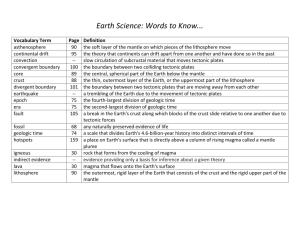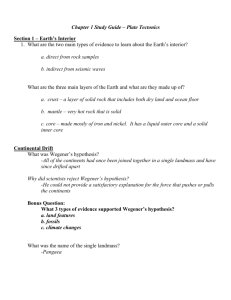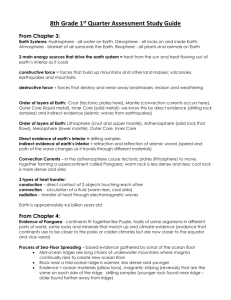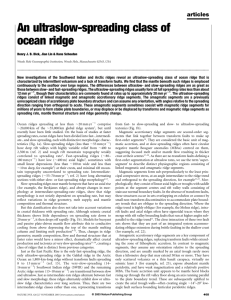Evidence for Continental Drift
advertisement
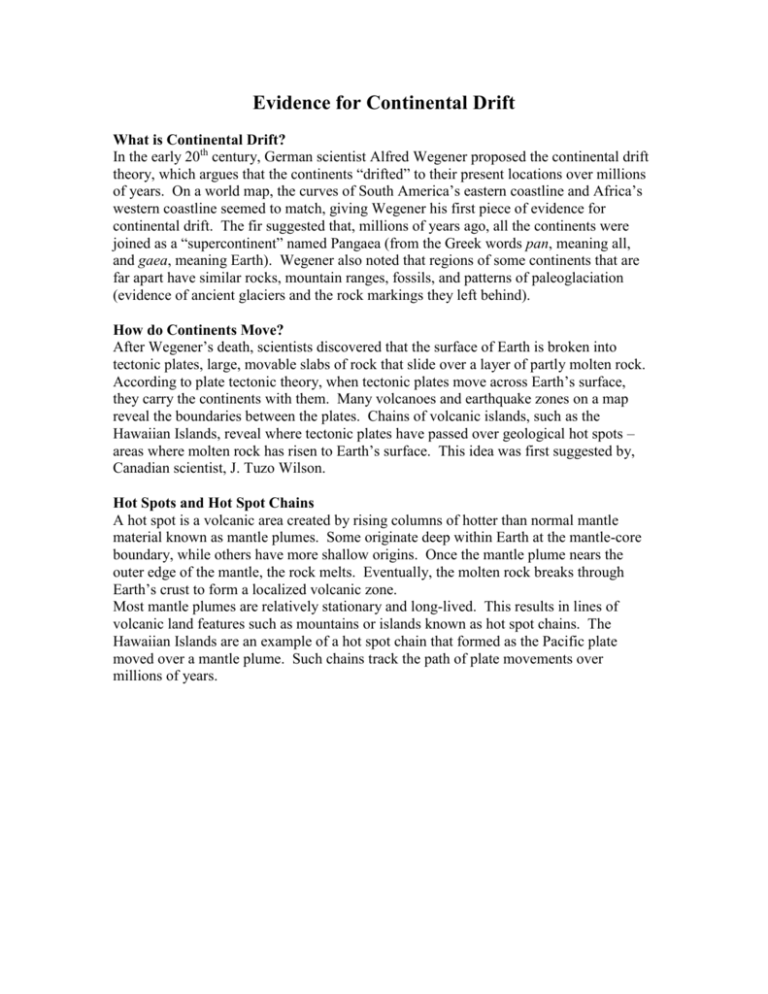
Evidence for Continental Drift What is Continental Drift? In the early 20th century, German scientist Alfred Wegener proposed the continental drift theory, which argues that the continents “drifted” to their present locations over millions of years. On a world map, the curves of South America’s eastern coastline and Africa’s western coastline seemed to match, giving Wegener his first piece of evidence for continental drift. The fir suggested that, millions of years ago, all the continents were joined as a “supercontinent” named Pangaea (from the Greek words pan, meaning all, and gaea, meaning Earth). Wegener also noted that regions of some continents that are far apart have similar rocks, mountain ranges, fossils, and patterns of paleoglaciation (evidence of ancient glaciers and the rock markings they left behind). How do Continents Move? After Wegener’s death, scientists discovered that the surface of Earth is broken into tectonic plates, large, movable slabs of rock that slide over a layer of partly molten rock. According to plate tectonic theory, when tectonic plates move across Earth’s surface, they carry the continents with them. Many volcanoes and earthquake zones on a map reveal the boundaries between the plates. Chains of volcanic islands, such as the Hawaiian Islands, reveal where tectonic plates have passed over geological hot spots – areas where molten rock has risen to Earth’s surface. This idea was first suggested by, Canadian scientist, J. Tuzo Wilson. Hot Spots and Hot Spot Chains A hot spot is a volcanic area created by rising columns of hotter than normal mantle material known as mantle plumes. Some originate deep within Earth at the mantle-core boundary, while others have more shallow origins. Once the mantle plume nears the outer edge of the mantle, the rock melts. Eventually, the molten rock breaks through Earth’s crust to form a localized volcanic zone. Most mantle plumes are relatively stationary and long-lived. This results in lines of volcanic land features such as mountains or islands known as hot spot chains. The Hawaiian Islands are an example of a hot spot chain that formed as the Pacific plate moved over a mantle plume. Such chains track the path of plate movements over millions of years. Spreading Ridges The process of sea floor spreading, first proposed by Harry Hess, provides a mechanism for continental drift. This process involves magma, molten rock from beneath Earth’s surface. Because it is molten, magma is lee dense than the surrounding rock. Thus, magma rises and breaks through the Earth’s crust in certain weak areas. One such place is a spreading ridge, a gap in the sea floor that is gradually widening as tectonic plates move apart. Magma cools and hardens as it intrudes into this gap, pushing older rock aside as it creates new sea floor. The largest of all spreading ridges, and the first one discovered, is the Mid-Atlantic Ridge, a mountain range running north to south down the length of the Atlantic Ocean. A spreading ridge is a mountainous region on the ocean floor that forms at divergent boundaries. Here, hot rock rises from the mantle below and fills the fractures created by the diverging plates. As this rock cools and hardens, new lithosphere is made. As it forms, new lithosphere is continuously moved aside from the region of upwelling. This occurs along the floors of all the major ocean basins and has be coined seafloor spreading. Along the region of upwelling, the lithosphere is raised above the surrounding rock due to heat expansion and forms a mountainous ridge. Earthquakes and volcanic activity is common here. These areas are known as spreading ridges, oceanic ridges, or mid-ocean ridges. The evidence for sea floor spreading includes the following: Age of ocean rocks: The youngest rocks are found closest to the ridge, indicating that new rock is being formed. Sediment thickness: The layer of ocean sediment – the small particles of silt and organic debris deposited on the ocean floor – becomes thicker the farther it is from the ridge. This indicates that the sea floor is older the farther away it is from the ridge. Magnetic striping: At a spreading ridge, iron-containing minerals in the magma align themselves with Earth’s magnetic field as the magma cools. Because the orientation of Earth’s magnetic field has switched many times over history, rocks on the sea floor exhibit both normal polarity and reverse polarity, depending on when they cooled. When scientists used a magnetometer, a device that detects variations in magnetic fields, they found a pattern of alternating polarity repeated on both sides of the Mid-Atlantic Ridge, as shown below. This phenomenon, known as magnetic striping, indicates that new rock is being laid down on the sea floor.



